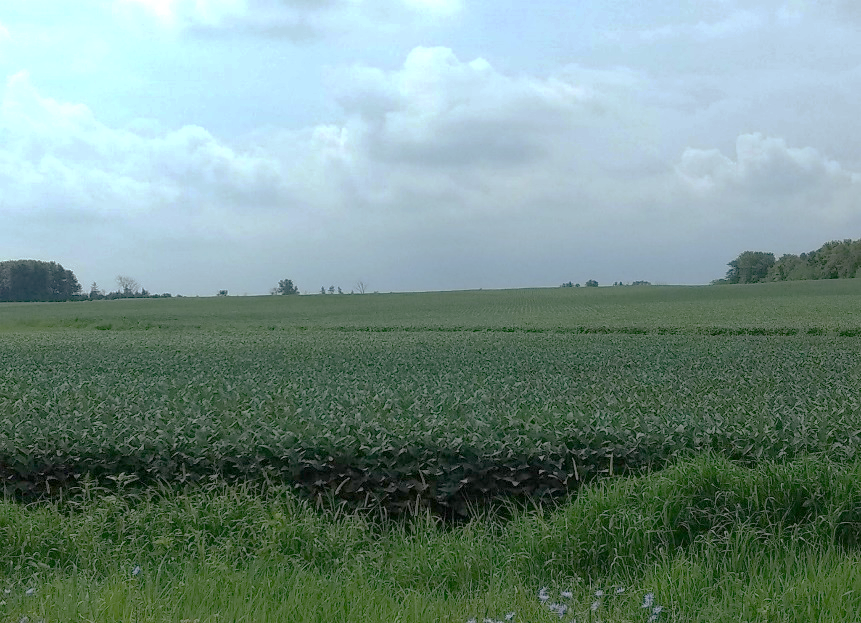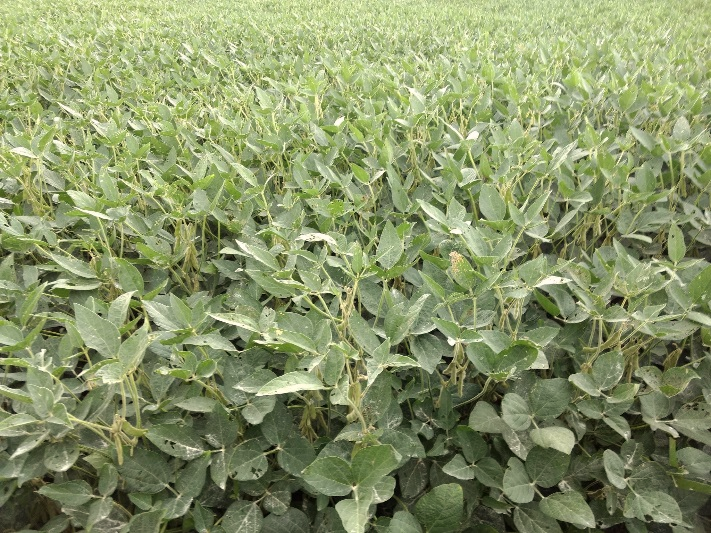It’s early August in Northern Illinois and it’s time to start wrapping up the 2018 soybean crop. Granted, August rains can add some yield, but for the most part the soybeans are made, though not in the bin.
Now is the time we must evaluate whether sudden death syndrome (SDS) and white mold, which may have infected the crop in earlier development stages, continued to grow and will ultimately cause yield loss by harvest.
In May and June, I tried out a new mobile app that will help predict the need to treat soybeans for the infection of white mold. I reported on this app in my June blog post. The app recommended treatment on one of three test fields that I evaluated this spring. No treatments were applied, I was only looking at the usefulness of the app. None of the fields have shown symptoms of white mold developing in the canopy. One reason I feel this happened is that the blooms lowest on the plant were present before white mold spores emerged. A May heatwave sped up soybean development. And when the spores were finally present, the beans were already blooming higher on the plant, out of reach of the spores, which splash first onto the lower dying blooms at the bottom of the plant.

Image 1: SDS and white mold haven’t shown up over many acres this season.
Sudden death syndrome also infects soybean plants early, then presents symptoms later in the growing season. I polled several of my colleagues across the Northern counties of the state, and they were consistent in saying they had seen small areas of the disease beginning to show up late in July, but no general large-scale infections. It’s been my experience that if we don’t see a widespread presence of SDS by July 15 in Northern Illinois, even if it shows up later, it won’t have a profound effect on final soybean yield, though it may keep the beans from reaching their full potential.

Image 2: If SDS and white mold don’t show up by mid-July, yields often aren’t badly hurt.
Next year will always be different, so keep an eye on upcoming ILSoyAdvisor content for ways to combat these and other soybean yield robbers.




 and then
and then